What comes to mind when you hear someone say their dog is a “Spitz”? I, for one, used to associate it with spitfire for some reason. Which I suppose is an apt description for many of these dogs. But Spitz is not a specific breed; instead, it is a term to describe a group of breeds.
What is a Spitz Dog
Breeds are classified as a “Spitz” because they share certain similar features. They are characterized by their long, dense coats, erect and pointed ears, slender, pointed noses, and they originate from northern regions. Many spitz dogs have white coats. Some have tails that hand down, but most have tails curled up over their back. Spitz dogs are often described as having a fox-like or wolfish appearance. They are also among the oldest and most primitive types of domestic dogs, dating back thousands of years.
The word “spitz” comes from the German word for “pointed”.
45+ Spitz Dog Breeds
Many spitz breeds share a lot of similarities, but they also differ in many ways. They come in a range of sizes, colors, personalities, and functions. Some were bred to be companion dogs, and others were bred to embrace a hard day’s work.
It’s hard to narrow down how many Spitz breeds there truly are. Depending on the source, there are anywhere from 40-70 different breeds. Some are recognized by major organizations like the American Kennel Club (AKC) or the United Kennel Club (UKC), while others are rare/regional breeds that are not officially registered.
Without further ado, let’s look at the most popular, interesting, and rare Spitz dog breeds!
Chow Chow
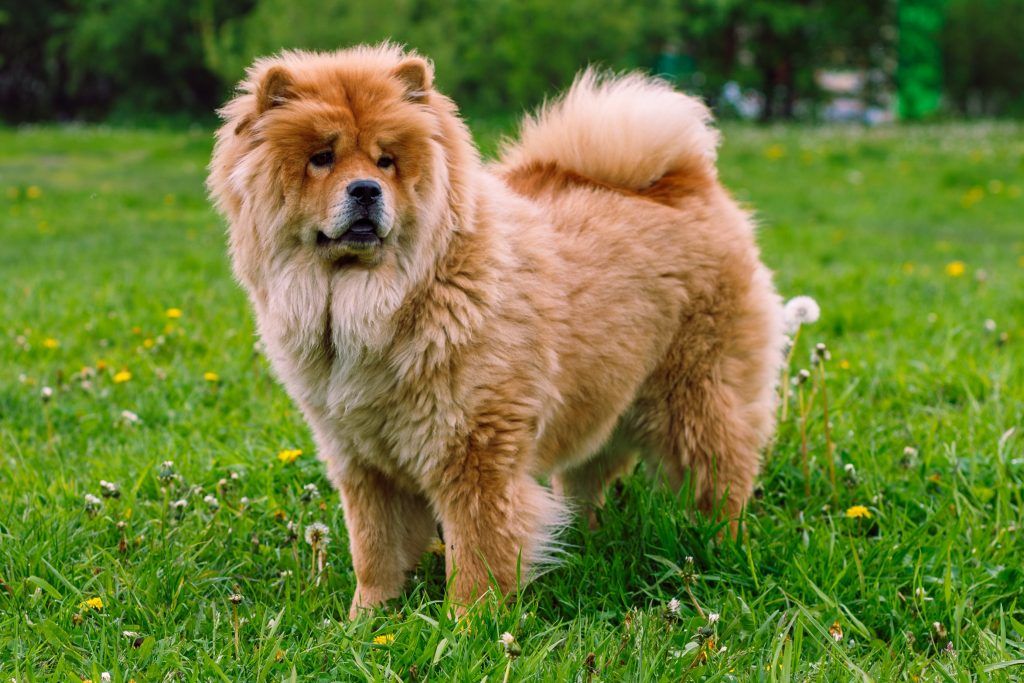
The Chow Chow is an ancient Chinese dog breed. Dating back over 2,000 years! They were strong workers, bred and used as hunting, herding, and guarding dogs. They are known for their distinctive lion-like appearance, having a thick mane around their necks, and their blue-black colored tongues. While red is the most common coat color, they can also be seen with black, cream, or cinnamon-colored coats. Don’t let their wrinkled face and serious expression fool you, they often form strong, loyal bonds with the humans they love. Though they remain aloof and wary of strangers.
Breed Overview
Group: Non-Sporting (AKC)
Height: 17 to 20 inches
Weight: 45 to 70 pounds
Coat and Color: Thick double coat that can be smooth or rough; comes in various colors such as red, black, blue, cream, or cinnamon
Life Expectancy: 8 to 12 years
Pomeranian

Of all the spitz breeds, the Pomeranian is one of the smallest and fluffiest. Originally from Germany, they were bred from larger spitz dogs like the German Spitz to create a smaller companion breed. What they got was a ‘toy’ sized (under 7 lbs) dog with a huge personality to contrast its size. These little fluff balls are as amusing as they are cute, always ready to play and offer friendship. They do tend to bark a lot, making them good watchdogs, if not an effective guard dog.
Breed Overview
Group: Toy (AKC)
Height: 6 to 7 inches
Weight: 3 to 7 pounds
Coat and Color: Long and fluffy double coat that forms a ruff around the neck and chest; comes in any color or pattern
Life Expectancy: 12 to 16 years
Japanese Spitz

The Japanese Spitz is a small spitz breed developed in Japan. They are known for their friendly and loving personalities, up for any adventure as long as they’re with ‘their’ person/people. These comedic dogs sport a long, thick coat that is pure white in color. Despite the abundance of fur, they don’t require much grooming, making them fairly low-maintenance dogs.
Breed Overview
Group: Companion (UKC)
Height: 12 to 15 inches
Weight: 11 to 20 pounds
Coat and Color: Long and thick white coat that contrasts with black nose, eyes, and lips
Life Expectancy: 10 to 16 years
Samoyed

Coming from Siberia, where long fur is a necessity, we have the majestic-looking Samoyed dog. They were bred by and named after the nomadic Samoyed people. These dogs were often used for sledding, hunting, and herding – but its most unique quality is why they hold a special place for many people. Their mouth is upturned at the back, giving them a constant smiling expression. Earning them the nickname “the smiling dog”. While we think it’s cute, its actually an adaptive trait due to the harsh cold weather of its homeland. The upturned mouth prevents excessive drooling and icicles from forming there while it’s working.
Breed Overview
Group: Working (AKC)
Height: 19 to 23.5 inches
Weight: 35 to 65 pounds
Coat and Color: Thick double coat that can be pure white, cream, or biscuit
Life Expectancy: 12 to 14 years
German Spitz

The German Spitz is the oldest spitz breed in Europe. It’s also believed that its ancestors served a key role in the domestication of modern dogs as we know them. They were used as guard dogs for centuries throughout Germany and later kept as loyal companions. These dogs are often great with children, as they live to play and adore spending time with their family. However, they retain their hyper-vigilant instincts and remain ever-watchful for danger.
Breed Overview
Group: Non-Sporting (AKC)
Height: 9 to 18 inches
Weight: 9 to 40 pounds
Coat and Color: Long and fluffy double coat that can be of any color or combination of colors
Life Expectancy: 13 to 15 years
Keeshond
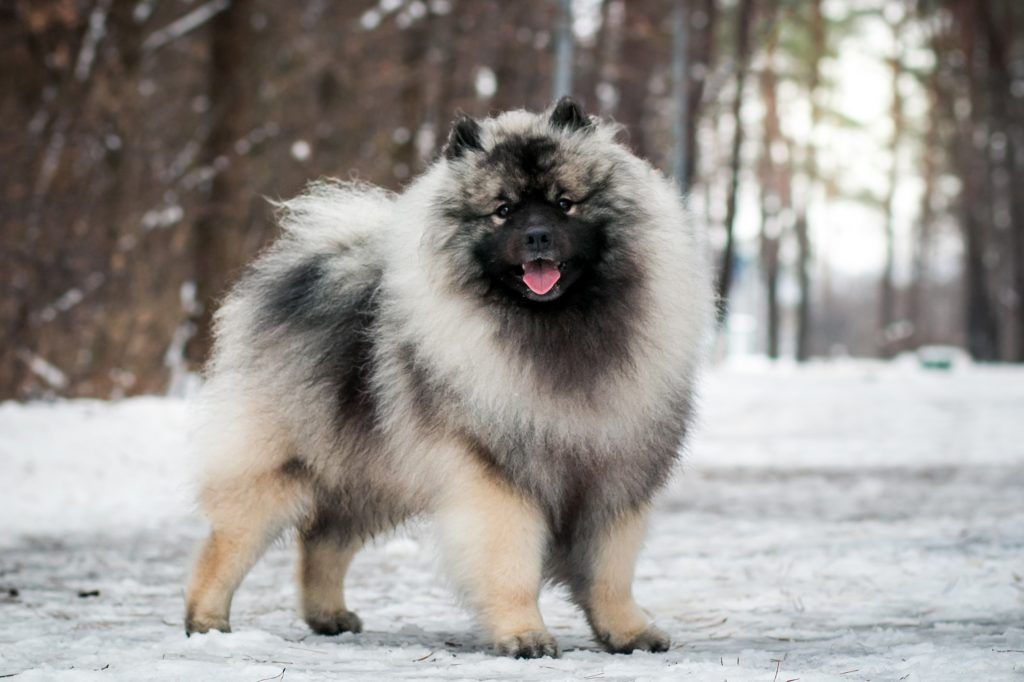
Also known as the Wolfspitz (a sub-type of German Spitz), the Keeshond is recognized as its own spitz breed that originated in the Netherlands. They were used as barge dogs – meaning they served as watchdogs on barges as they traveled the Rhine River. Their coat pattern is one of their more distinctive features, with markings forming a ‘spectacled’ look around their eyes. Which gives them an intelligent and quizzical appearance.
Breed Overview
Group: Non-Sporting (AKC)
Height: 17 to 18 inches
Weight: 35 to 45 pounds
Coat and Color: Thick and profuse double coat that comes in shades of gray, black, and cream; has distinctive markings such as the “spectacles” around the eyes
Life Expectancy: 12 to 15 years
Siberian Husky
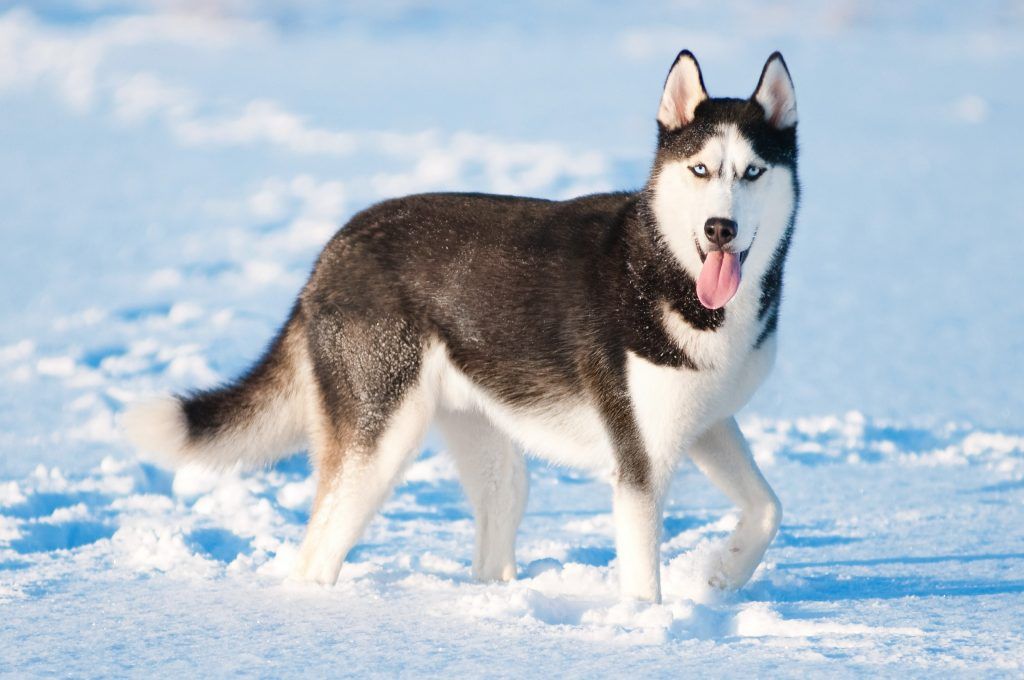
One of the most highly recognized dogs in the world is the Siberian Husky. But many people don’t realize they are also a spitz dog breed. They were originally used by the Chukchi people in Siberia for sledding and hunting. Surely, the Chukchi’s could have never guessed their useful dog would become a fan favorite around the world. They are known for their striking wolf-like appearance and often heterochromatic (two different colored) eyes. In fact, if you saw one darting across the snow-covered plain, you’d probably think you saw a wolf. These dogs also make fantastic family dogs – for those ready to meet the intense exercise regimen.
Breed Overview
Group: Working (AKC)
Height: 20 to 23.5 inches
Weight: 35 to 60 pounds
Coat and Color: Thick but not very long double coat that can be black, gray, red, white, or any combination of these colors; has a wolf-like or foxy face with blue or brown eyes (or one of each)
Life Expectancy: 12 to 14 years
Shiba Inu
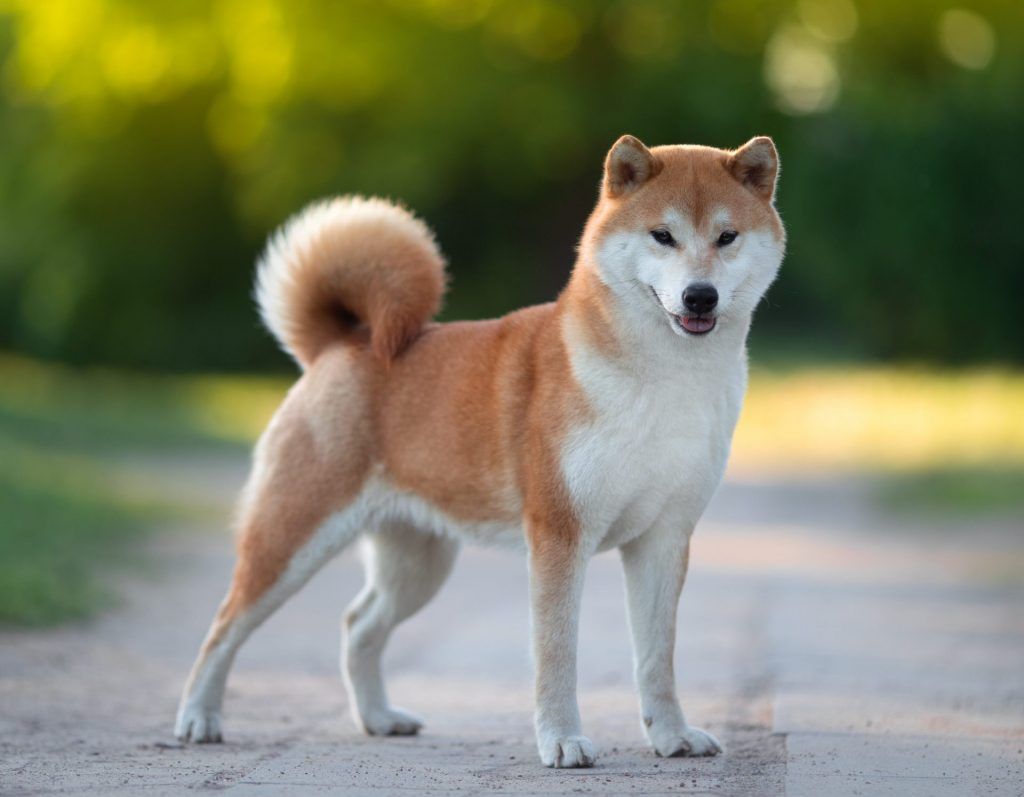
In recent history, the Shiba Inu lent its name to a new cryptocurrency, the Shiba Inu Coin. Which led to a pop-culture boom of both the crypto coin and the dog breed itself. But Shibas are not new by any stretch – they are actually one of the oldest dog breeds in the world. Dating back over 10,000 years to some of the earliest Japanese immigrants. They have a fox-like appearance, with a small pointed face, erect ears, and thick curled tail. Originally used to flush game out of hiding, which is also where they got their name. Shiba Inu translates to “brushwood dog”.
Breed Overview
Group: Non-Sporting (AKC)
Height: 13.5 to 16.5 inches
Weight: 17 to 23 pounds
Coat and Color: Short and dense double coat that comes in four colors: red, black and tan, sesame, or cream
Life Expectancy: 13 to 16 years
Finnish Spitz

The Finnish Spitz is the national dog of its homeland, Finland, where they were used as small animal hunting dogs. They have a unique and distinct bark that can sound like a ring or yodel, which they use to alert their hunter to the location of an animal. Today, they have a yearly ‘barking’ competition in Finland where some of these dogs have been recorded barking over 160 times in 1 minute. Needless to say, this is not the best breed to have in an apartment or around neighbors who may get irritated. But for those that have the space or seclusion, these are extremely loyal dogs that love attention.
Breed Overview
Group: Non-Sporting (AKC)
Height: 15.5 to 20 inches
Weight: 20 to 35 pounds
Coat and Color: Double coat that varies in length depending on the season; golden-red in color
Life Expectancy: 12 to 15 years
Akita Inu
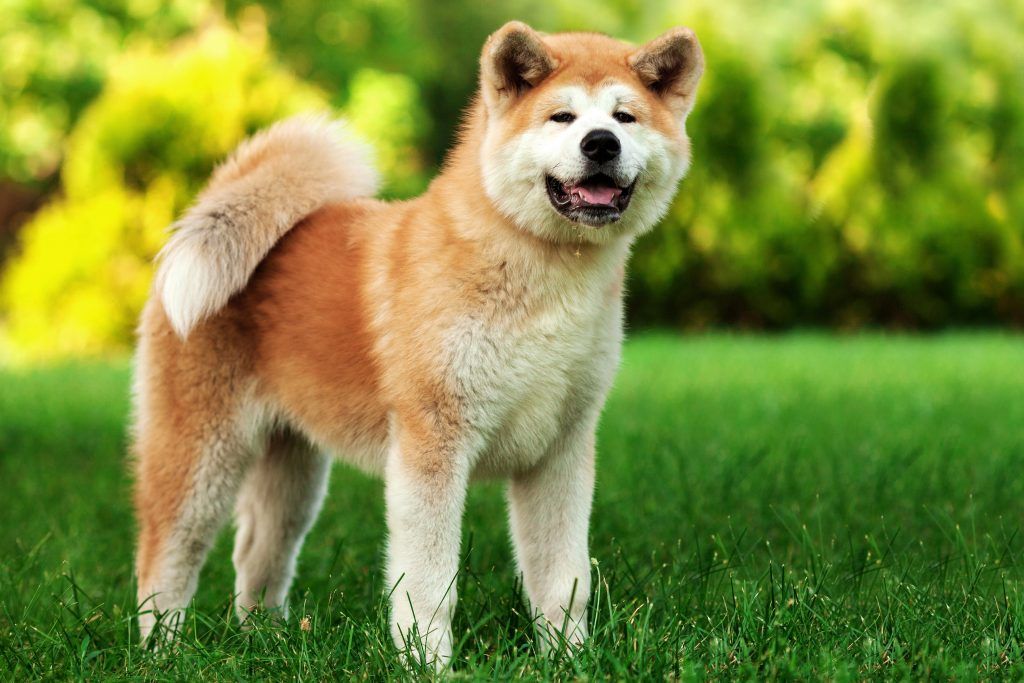
Another Japanese spitz breed is the Akita Inu. They are cousins of the Shiba Inu and share a similar appearance, but Akitas are much larger, often reaching over 100 lbs. Historically, they were used as guard dogs and for hunting large game – Elk and bears! Later, in the 1500s, they were often seen as companions of the Samurai. In 1931, the Akita was officially listed as a Japanese national treasure. Talk about an exciting history!
Breed Overview
Group: Working (AKC)
Height: 24 to 28 inches
Weight: 70 to 130 pounds
Coat and Color: Thick and coarse double coat that comes in various colors such as white, brindle, or pinto
Life Expectancy: 10 to 12 years
Volpino Italiano
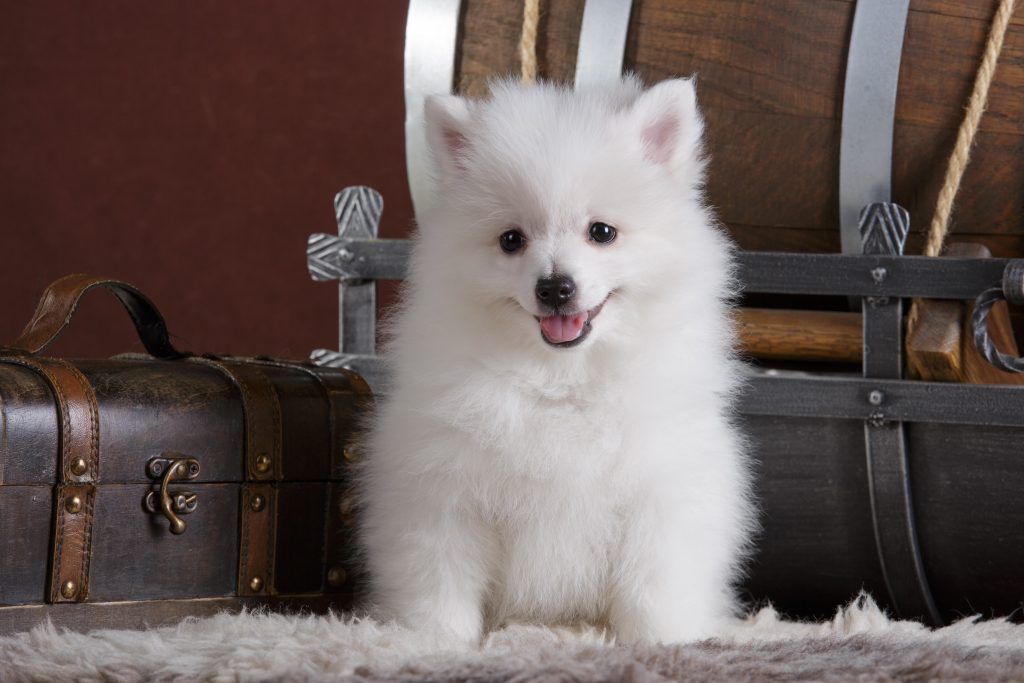
The Volpino is a spitz breed from Italy, where it was favored by commoners, royals, and artists. The breed is depicted in a number of Italian Renaissance artworks, and Michaelangelo himself owned one that famously watched him paint the Sistine Chapel. Today, they are a rare breed of dog – with less than 3,000 in existence. These dogs are often confused with similar-looking dogs, such as the Pomeranian, but they are a distinct breed.
Breed Overview
Group: Companion (UKC)
Height: 9 to 12 inches
Weight: 9 to 12 pounds
Coat and Color: Long and fluffy double coat that comes in white, red, or champagne colors
Life Expectancy: 14 to 16 years
German Spitz Mittel

The German Spitz Mittel or Mittelspitz is a medium-sized variety of the German Spitz. They are quite fluffy for their size and form a short frilled mane around their neck, although not as noticeable as the Chow Chow.
Breed Overview
Group: Companion (UKC)
Height: 12 to 15 inches
Weight: 23 to 41 pounds
Coat and Color: Long and fluffy double coat that can be of any color or combination of colors
Life Expectancy: 13 to 15 years
Alaskan Malamute
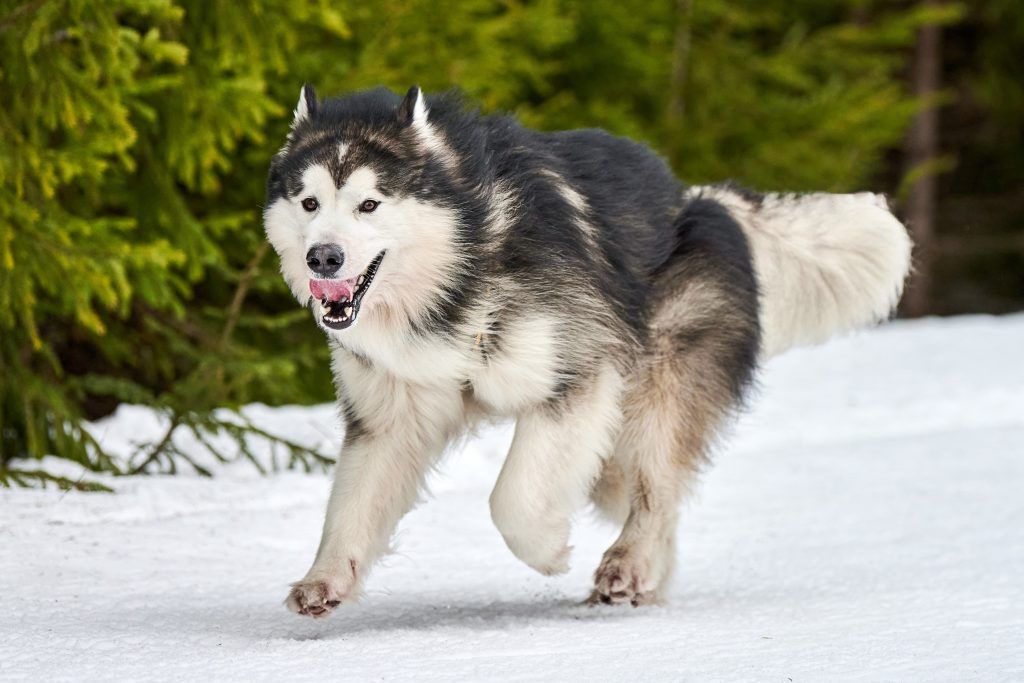
The Alaskan malamute is a spitz breed from the rugged northwest coast of Alaska, where it was used by the Mahlemut people for hunting and hauling heavy freight (sled dog). At a quick glance, they look similar to the Siberian husky, but there are notable differences. The Alaskan malamute is a bigger, heavier dog with longer, thicker fur. They often have curlier tails and a less wolf-like face.
Breed Overview
Group: Working (AKC)
Height: 23 to 25 inches
Weight: 75 to 85 pounds
Coat and Color: Thick and coarse double coat that comes in various colors such as black and white, gray and white, red and white, or sable and white
Life Expectancy: 10 to 14 years
Eurasier
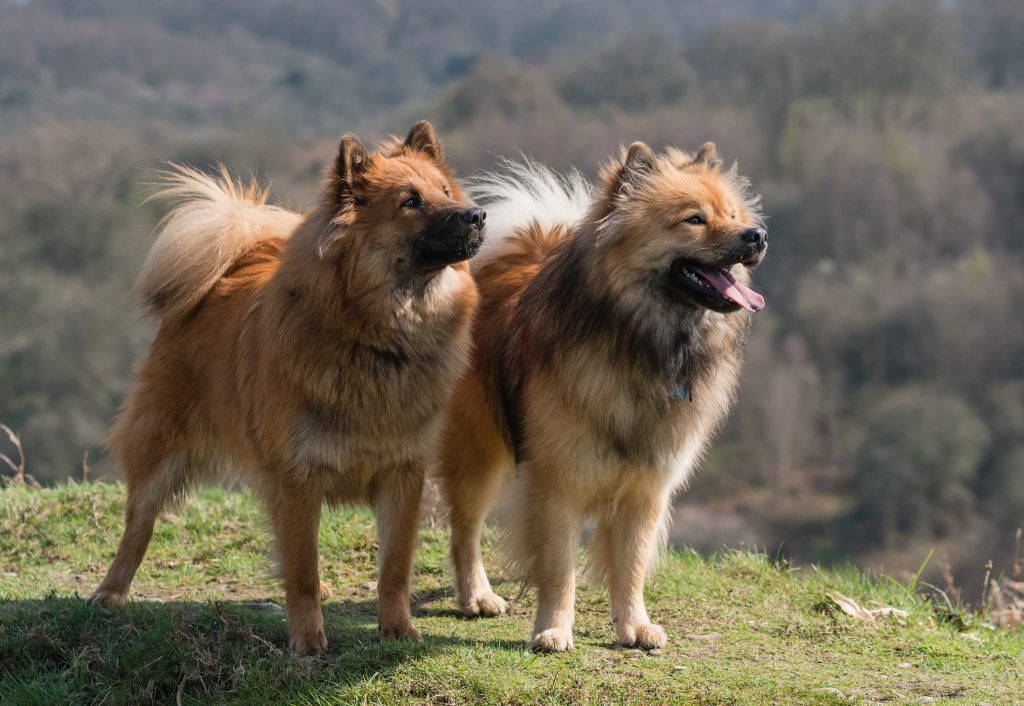
The Eurasier is a newer spitz breed originating in Germany. It was developed in the 1960s by crossing the Chow Chow, Keeshond, and Samoyed breeds. The breed was named as a nod to the Asian and European breeds used in its creation. They are calm, confident family dogs that love to be in close proximity to their family. They don’t do well being left alone or kenneled.
Breed Overview
Group: Companion (UKC)
Height: 20 to 24 inches
Weight: 40 to 70 pounds
Coat and Color: Medium-long and thick double coat that comes in various colors such as black, red, fawn, or sable
Life Expectancy: 12 to 14 years
Norrbottenspets
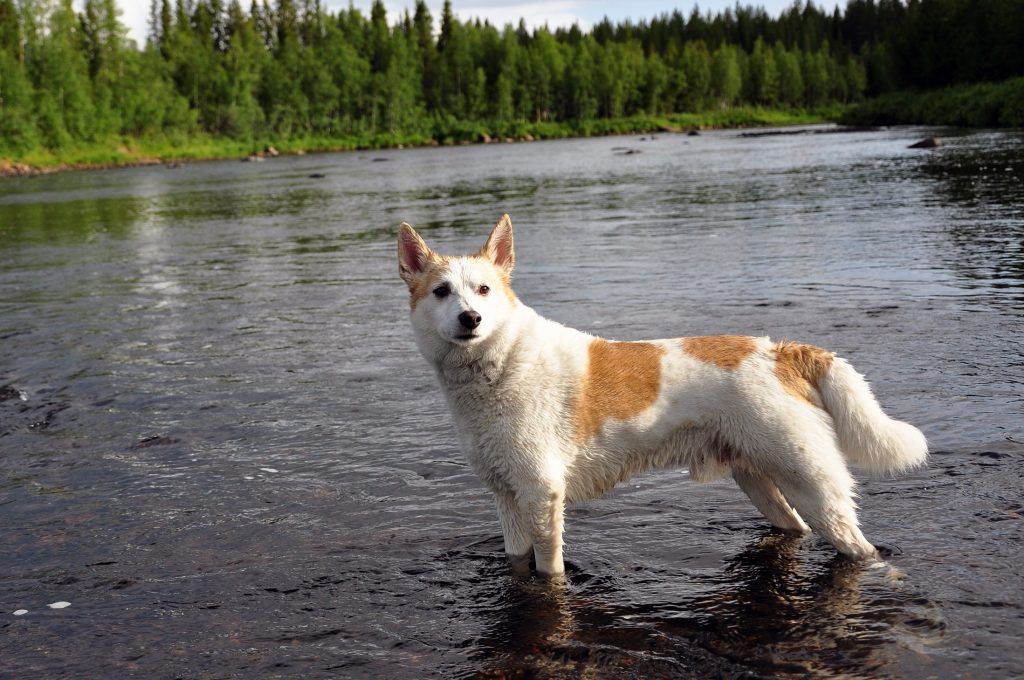
The Norrbottenspets, also known as the Nordic Spitz, is a small but fearless hunting dog from Sweden. Despite their small stature, these dogs are as tough as they get – they had to be to hunt in the harsh Scandinavian peninsula. For many years, it was thought that this breed had gone extinct, but they survived as companion dogs in Norbotten (North Bothnia in English), a northernmost area of Sweden. Today, they are still considered an exceptionally rare breed.
Breed Overview
Group: Northern Breed (UKC)
Height: 16.5 to 18 inches
Weight: 20 to 30 pounds
Coat and Color: Short and dense double coat that comes in various colors such as white with red or yellow patches
Life Expectancy: 15 to 17 years
Basenji

Serving as an all-purpose dog in Africa for thousands of years, the Basenji is both listed as a spitz breed and as a primitive breed. They are also called the ‘barkless dog’ because instead of being able to bark like most dogs, they make a yodeling sound due to their oddly shaped larynx. These dogs are one of the only spitz breeds not to come from a cold Arctic region, but the hunting terrain of their home is no less harsh.
Breed Overview
Group: Hound (AKC)
Height: 16 to 17 inches
Weight: 22 to 24 pounds
Coat and Color: Short and smooth double coat that comes in various colors such as black and white, red and white, brindle, or tricolor
Life Expectancy: 13 to 14 years
Finnish Lapphund
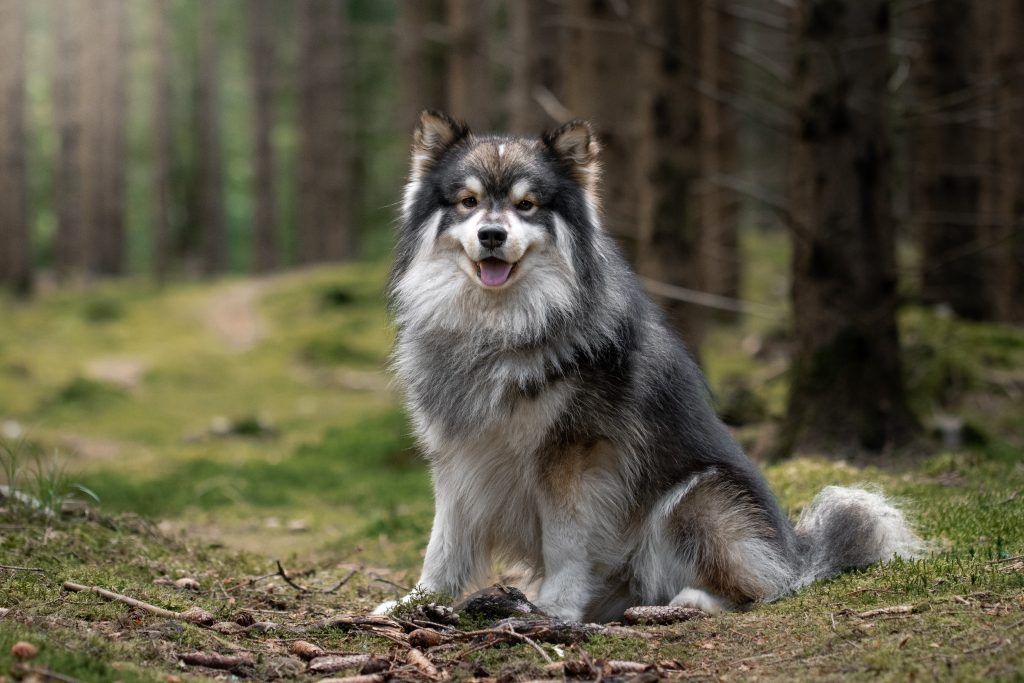
The Sami people of Finland used the Finnish Lapphund to guard and herd reindeer. The name, Lapphund, comes from their place of origin in Lapland, a sub-artic region of northern Finland. They developed a long coat to protect themselves from the cold, harsh weather of the area. Today, they are known for their friendly, cheerful personalities and love of human companionship. Although they are popular in Finland, they are considered rare outside of the Nordic countries.
Breed Overview
Group: Herding (AKC)
Height: 16 to 21 inches
Weight: 33 to 53 pounds
Coat and Color: Long and profuse double coat that comes in various colors such as black, brown, tan, cream, or sable
Life Expectancy: 12 to 15 years
Swedish Vallhund
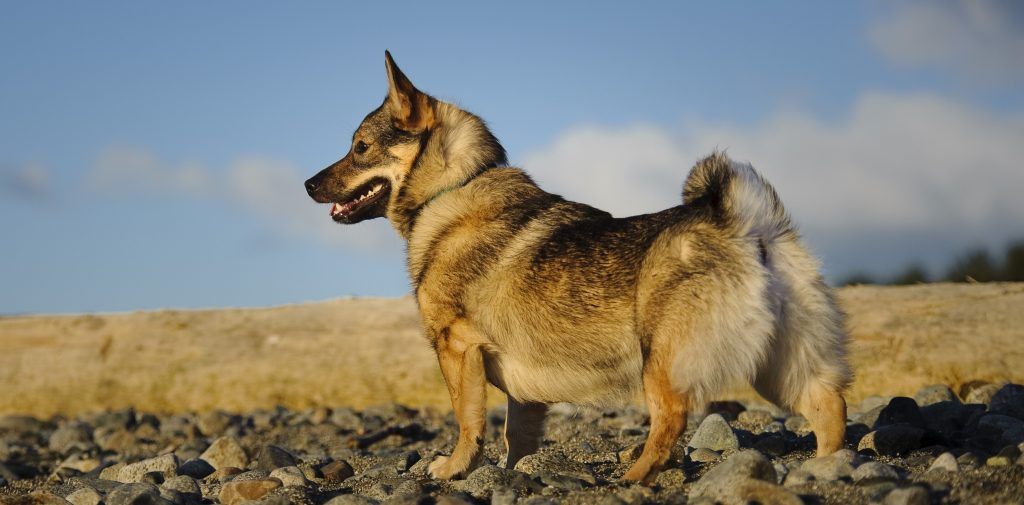
This sweet-faced farm dog was originally bred to herd cattle in Sweden. Their short legs and big, long body resemble that of a Corgi, but according to Sweden, they are an original species (not the result of other breeds) dating back over 1,100 years. Sometimes called the ‘Viking dog’, the Swedish Vallhund played a large role in the Norse culture of the time. Today, they are the national dog of Sweden but are still relatively rare in other countries – but they are gaining popularity.
Breed Overview
Group: Herding (AKC)
Height: 11.5 to 13.5 inches
Weight: 20 to 35 pounds
Coat and Color: Short and harsh double coat that comes in various colors such as gray, red, or yellow
Life Expectancy: 12 to 15 years
Korean Jindo
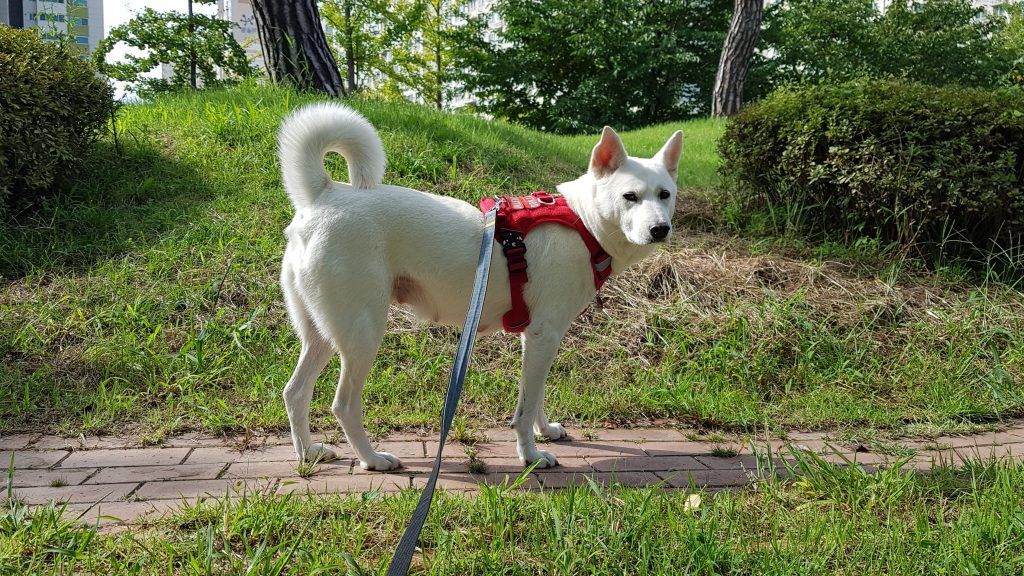
The Korean Jindo is a spitz breed from South Korea, more specifically, the island of Jindo off the southern coast. The breed is listed as a South Korean national treasure and is renowned for its tracking abilities. It’s said that these dogs can find their way home across great distances. For thousands of years, they were used as a weapon to kill prey, but now they are regarded as fiercely loyal companion dogs.
Breed Overview
Group: Foundation Stock Service (AKC)
Height: 18 to 22 inches
Weight: 35 to 50 pounds
Coat and Color: Short and dense double coat that comes in various colors such as white, red, black, tan, or brindle
Life Expectancy: 12 to 15 years
American Akita

In the United States, the American Akita is recognized as its own distinct breed – in other countries, it is considered the same as the Akita Inu. This breed was developed from the Japanese Akita after World War II. They have a heavier build than their parent breed, along with a broader range of coat colors. These dogs are considered a low-maintenance breed because they often groom themselves like a cat does – a unique canine trait indeed.
Breed Overview
Group: Working (AKC)
Height: 24 to 28 inches
Weight: 70 to 130 pounds
Coat and Color: Thick and coarse double coat that can be of any color or combination of colors
Life Expectancy: 10 to 12 years
Kishu Inu
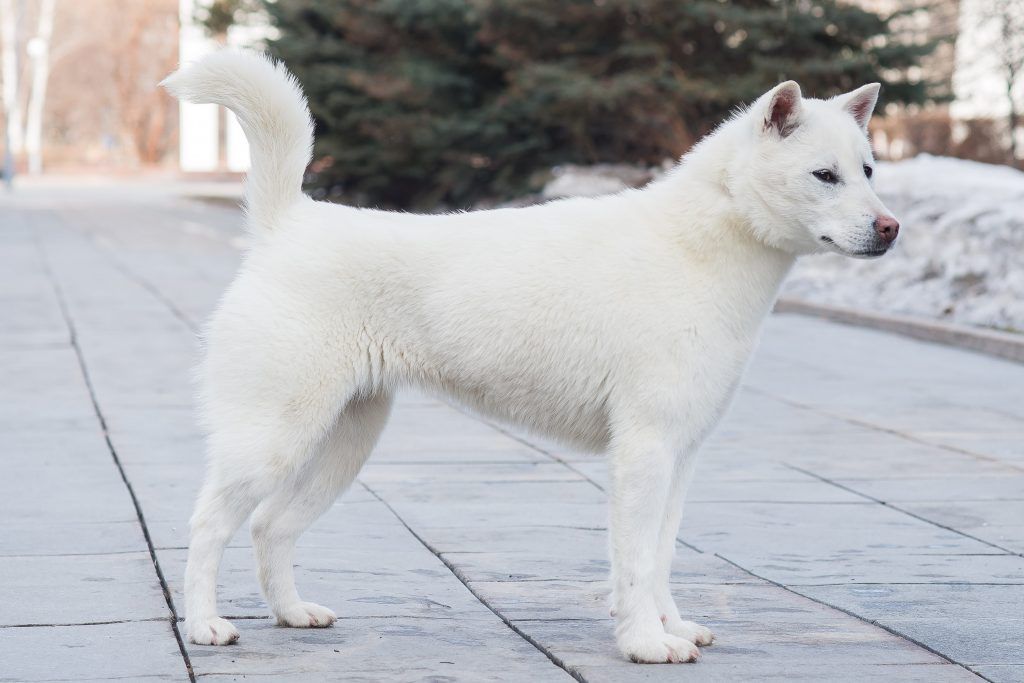
The Kishu Inu, also known as Kishu or Kishu Ken, descended from the hardy dogs that roamed the mountains of Japan over 1,000 years ago. These dogs are one-owner dogs – meaning they pick their person, and everyone else is second-rate. Although they prefer to be the only pet in the household, they have been known to tolerate a cat if they were raised together. Originally, they rocked a spotted coat color – it has since been all but bred out after it was decided only solid colors were acceptable. In 1934 Japan declared the Kishu Inu a living national treasure.
Breed Overview
Group: Foundation Stock Service (AKC)
Height: 17 to 22 inches
Weight: 30 to 60 pounds
Coat and Color: Short and dense double coat that comes in white, red, or sesame colors
Life Expectancy: 11 to 13 years
Greenland Dog
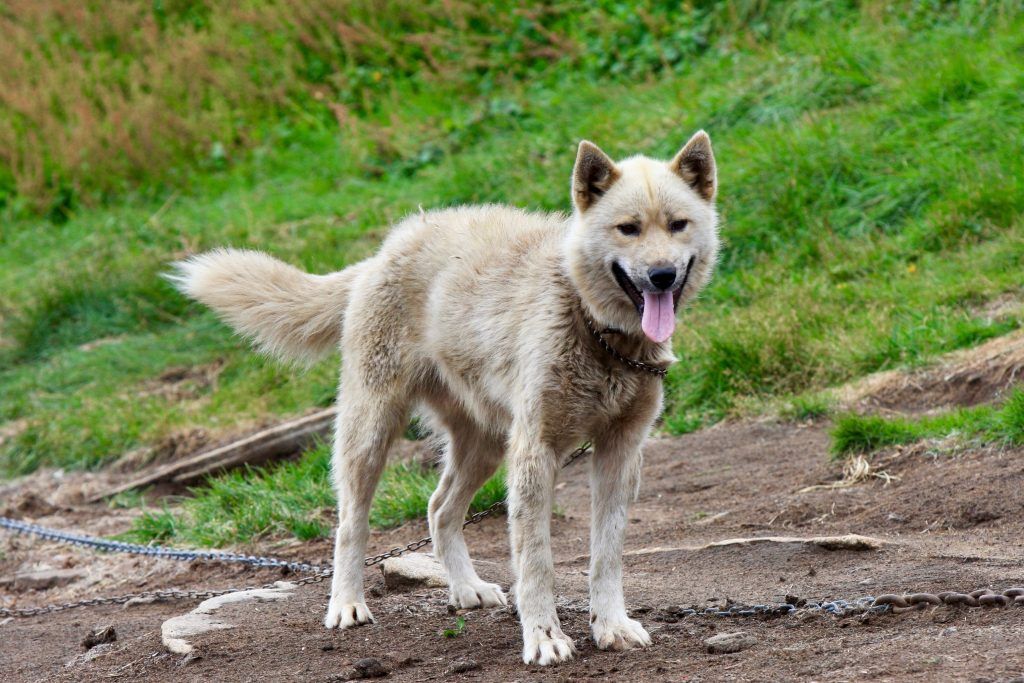
One of the oldest sled dogs in existence is the Greenland Dog. Historically, this Nordic breed was used by the Inuit people for both sledding and hunting. They are occasionally referred to as a Greenland Husky and are unmatched in their strength and willpower when it comes to pulling heavy loads. These dogs have thick, fluffy coats to protect them from the arctic weather. Today, Greenland has the largest population of sled dogs anywhere in the world – and they consist of only one breed. The Greenland Dog.
Breed Overview
Group: Working (UKC)
Height: 22 to 25 inches
Weight: 66 to 70 pounds
Coat and Color: Long and dense double coat that can be of any color or combination of colors
Life Expectancy: 12 to 14 years
Lapponian Herder
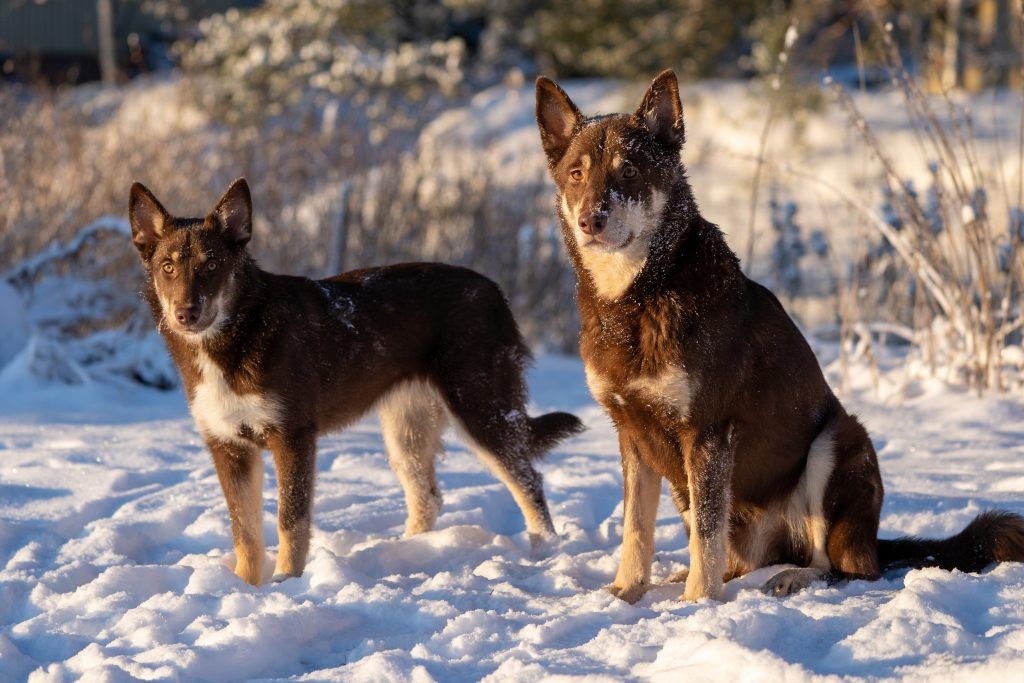
Another breed that made its name as a reindeer herder is the Lapponian Herder. They share similarities with the Finnish Lapphund because of their common ancestry. But this breed is larger, with shorter hair than its cousin. Both breeds descended from dogs used by the Sami people of the northern Finland regions.
Breed Overview
Group: Herding (UKC)
Height: 18 to 21 inches
Weight: 35 to 50 pounds
Coat and Color: Medium-long double coat that sheds water and dirt; black, brown, or gray in color with white markings on the chest, feet, and tail
Life Expectancy: 12 to 14 years
Kai Ken

The Kai Ken is a unique spitz breed from Japan, known for their tiger-like appearance due to its brindle coat pattern. They are extremely rare – even in their home country – and one of 6 dog breeds protected by the Japanese Dog Preservation Society (Nihon Ken Hozonkai). These dogs are natural hunters and highly protective, often going to great lengths to protect their families. Depending on where you are, you might see them referred to as “Tiger Dog” or “Tora Inu”.
Breed Overview
Group: Foundation Stock Service (AKC)
Height: 17 to 22 inches
Weight: 25 to 55 pounds
Coat and Color: Short and smooth double coat that comes in black brindle, red brindle, or brindle colors; has tiger-like stripes on its coat
Life Expectancy: 12 to 15 years
Norwegian Buhund

The Norwegian Buhund is an all-purpose farm dog from Norway, often associated with the Vikings. It was common for the Vikings to take this type of dog with them on colonization journeys because they would be needed on the homestead. These dogs take the title “Mans Best Friend” seriously – loving any activity as long as they are with their family. They are quick, agile, play vigorously, and love being the center of attention.
Breed Overview
Group: Herding (AKC)
Height: 16 to 18.5 inches
Weight: 26 to 40 pounds
Coat and Color: Medium-long double coat that comes in wheaten or black colors
Life Expectancy: 13 to 15 years
Norwegian Lundehund
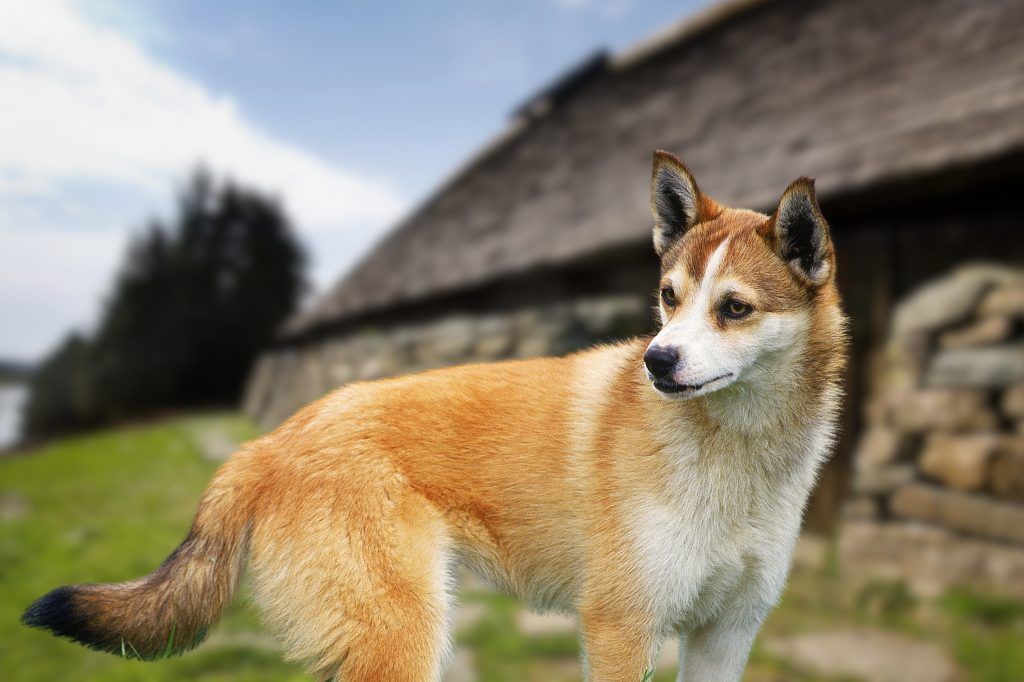
Hailing from the rocky island of Værøy, off the north-west coast of Norway, the Norwegian Lundehund is unique as it’s the only dog breed bred specifically for puffin hunting. Understandably earning them the name ‘Puffin Dog’. These dogs also have extra toes and display exceptional grip strength – using them to grasp the sides of rocky cliffs and dig in the rough terrain.
The word “Lunde” means Puffin and “Hund” means Dog. Literally translating to Puffin Dog.
Breed Overview
Group: Non-Sporting (AKC)
Height: 12 to 15 inches
Weight: 13 to 20 pounds
Coat and Color: Short and dense double coat that comes in various colors such as red, gray, or black
Life Expectancy: 12 to 14 years
Norwegian Elkhound

If you think the Norwegian Elkhound reminds you of a wolf – its because they are descended from a sub-species of gray wolf. They are the national dog of Norway, historically used as large game hunters. Their immense courage and strength made them ideal for hunting elk (as the name suggests) but also bears and wolves. One of their most distinct features is their shining silver-gray coat.
Breed Overview
Group: Hound (AKC)
Height: 19 to 20 inches
Weight: 48 to 55 pounds
Coat and Color: Thick and harsh double coat that is gray in color with black tips
Life Expectancy: 12 to 15 years
Karelian Bear Dog
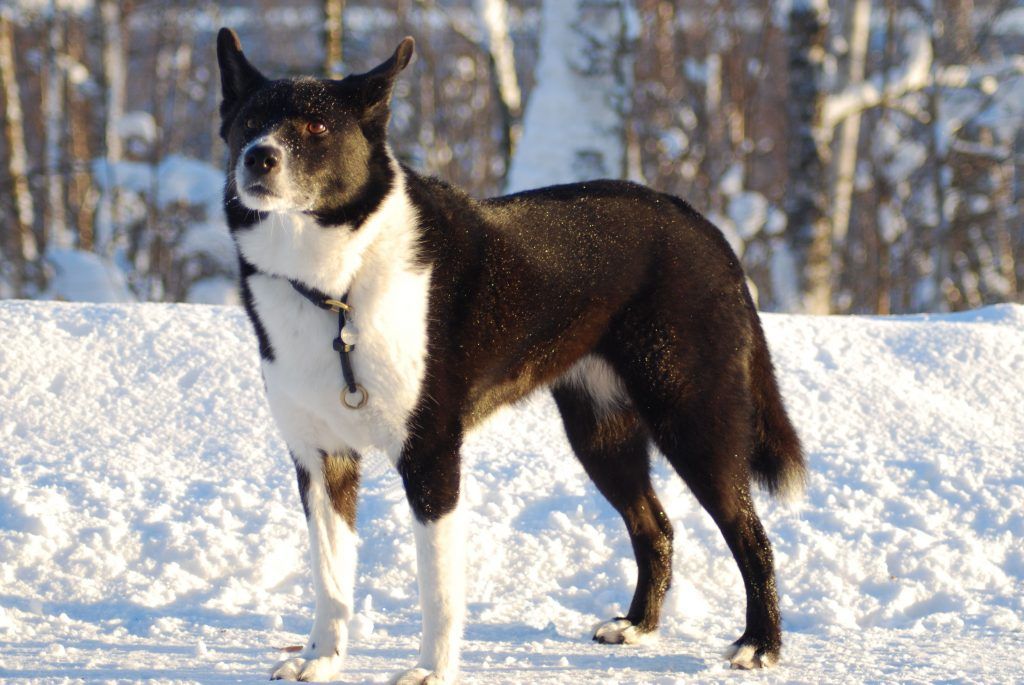
The Karelian Bear Dog, also known by its Finnish name ‘karjalankarhukoira‘, is a courageous dog breed from Finland. The breed was originally trained to hunt moose, wild boars, and brown bears. Now, this rare breed is growing in popularity as a bear deterrent due to its fearless nature. In Alaska, firefighters are employing these dogs to stave off bears while they are working, and one woman in Montana is training them to scare grizzlies away from human populations – hoping to save the bear’s life.
Breed Overview
Group: Northern Breed (UKC)
Height: 19 to 23 inches
Weight: 44 to 50 pounds
Coat and Color: Short and thick double coat that is black and white in color
Life Expectancy: 10 to 13 years
Shikoku
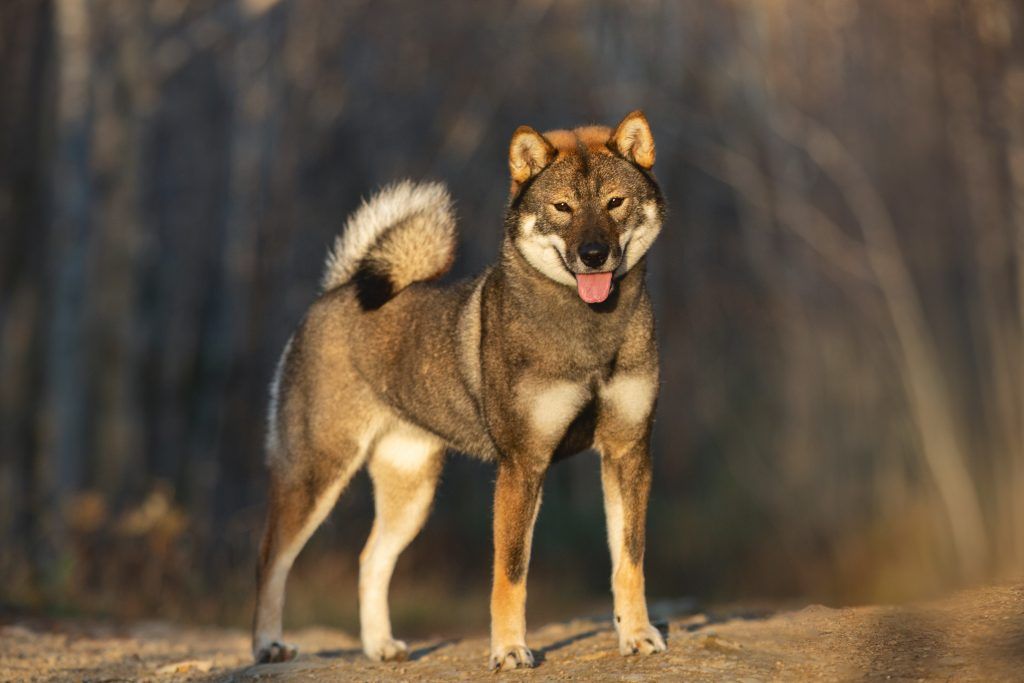
Labeled a culturally important national treasure in 1934, the Shikoku Inu or Kōchi-ken is one of Japan’s 6 native dog breeds. They are known for their impressive endurance and wolf-like appearance. Originally used for hunting boar and deer – these dogs are now kept as companion animals due their docility.
Breed Overview
Group: Foundation Stock Service (AKC)
Height: 17 to 21 inches
Weight: 35 to 55 pounds
Coat and Color: Short and dense double coat that is sesame-colored with black tips
Life Expectancy: 10 to 12 years
Icelandic Sheepdog
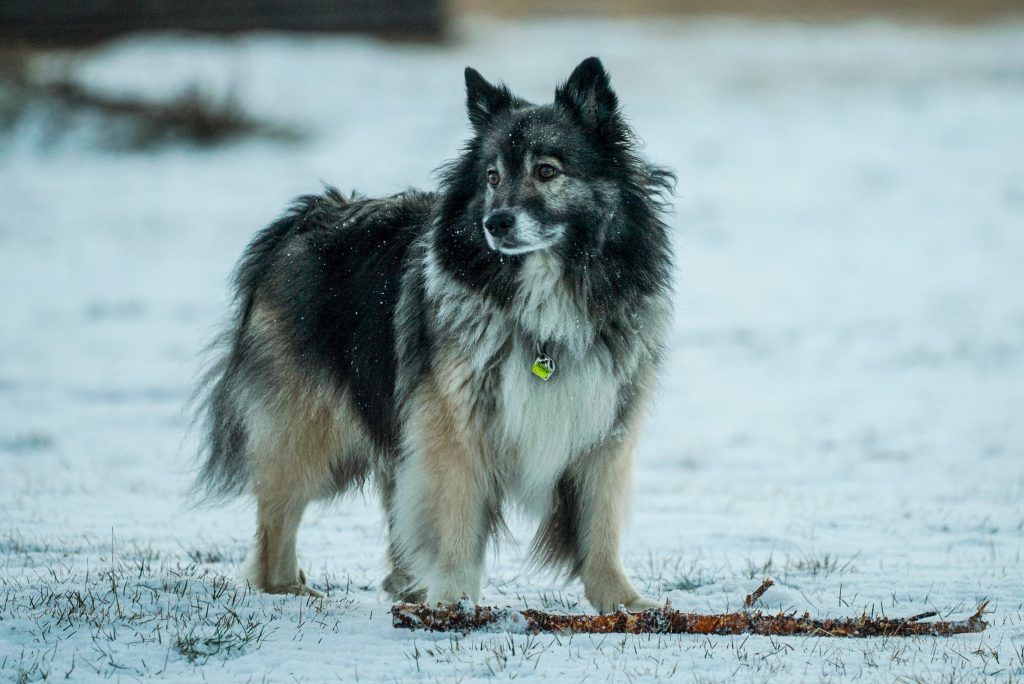
Also referred to as an Icelandic Spitz or Íslenskur fjárhundur, the Icelandic Sheepdog is Iceland’s only native dog breed – originally brought to the island nation by Vikings in the 9th century. They are primarily used as herding dogs and love nothing more than to be outside. They are known for their happy and sociable temperament, wanting to be involved in all the daily activities with their family.
Breed Overview
Group: Herding (AKC)
Height: 16 to 18 inches
Weight: 20 to 30 pounds
Coat and Color: Long or short double coat that comes in various colors and patterns
Life Expectancy: 12 to 15 years
West Siberian Laika
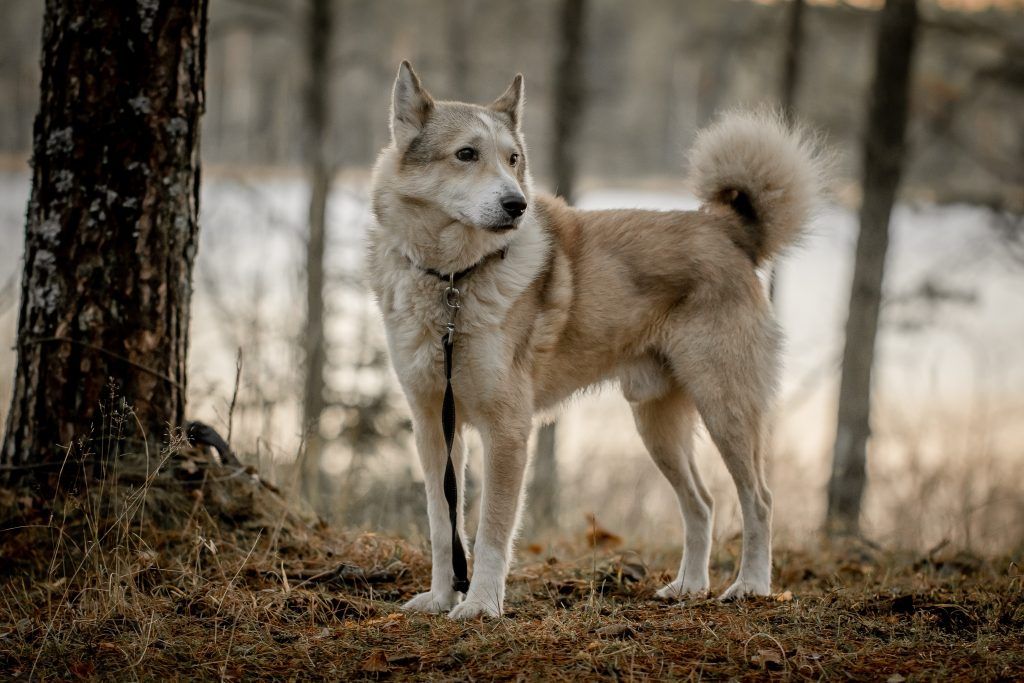
As the name suggests, the West Siberian Laika comes from the frigid wilderness of West Siberia. This breed is a close cousin of the Siberian Husky – developed by the Mansi (Voguls) and Khanty (Ostyak) indigenous people through artificial selection. The word Laika means “barker” or “little barking one”, chosen because of the way this dog points and barks when it trees an animal.
Breed Overview
Group: Northern Breed (UKC)
Height: 20 to 24 inches
Weight: 40 to 60 pounds
Coat and Color: Long and dense double coat that comes in various colors and patterns
Life Expectancy: 10 to 12 years
Swedish Lapphund
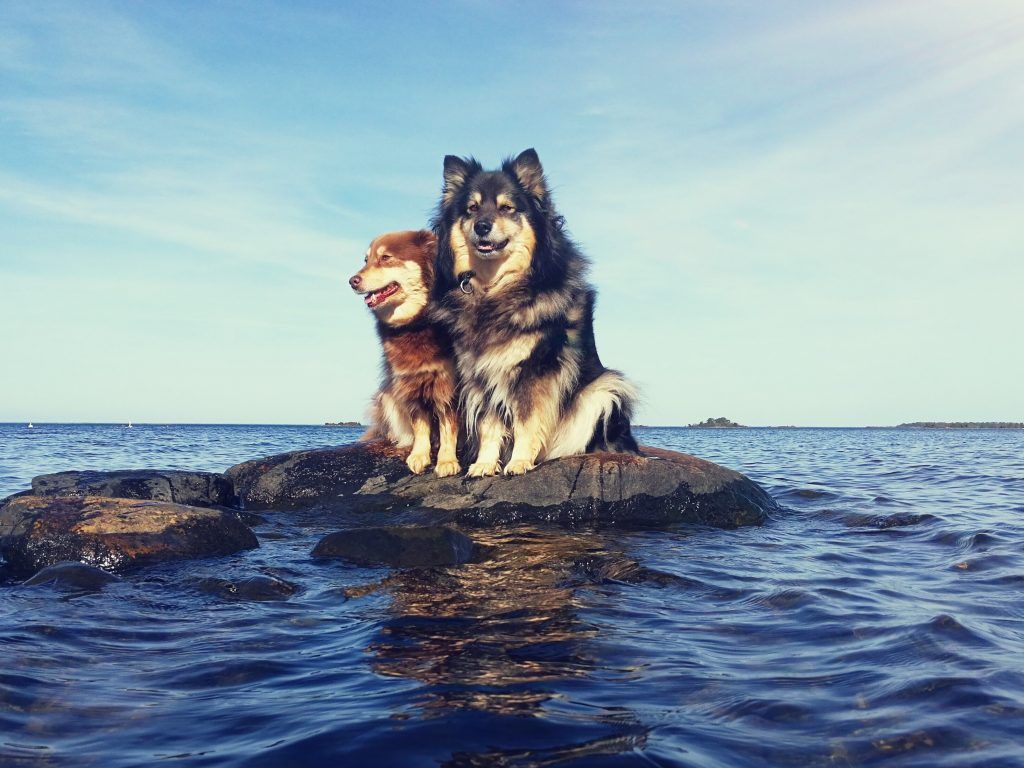
One of the 3 resulting dog breeds from the Sami people of Sweden, the Swedish Lapphund, was also used for herding reindeer. They are known for their friendly temperament and shiny black coat that reflects sunlight – giving them an almost blue appearance. These dogs are the oldest of Sweden’s 9 native dog breeds but are little seen outside of their homeland. In the United States, they are considered extremely rare, with only a handful of breeders.
Breed Overview
Group: Herding (UKC)
Height: 16 to 20 inches
Weight: 33 to 44 pounds
Coat and Color: Long and thick black coat that reflects sunlight
Life Expectancy: 12 to 14 years
Jämthund
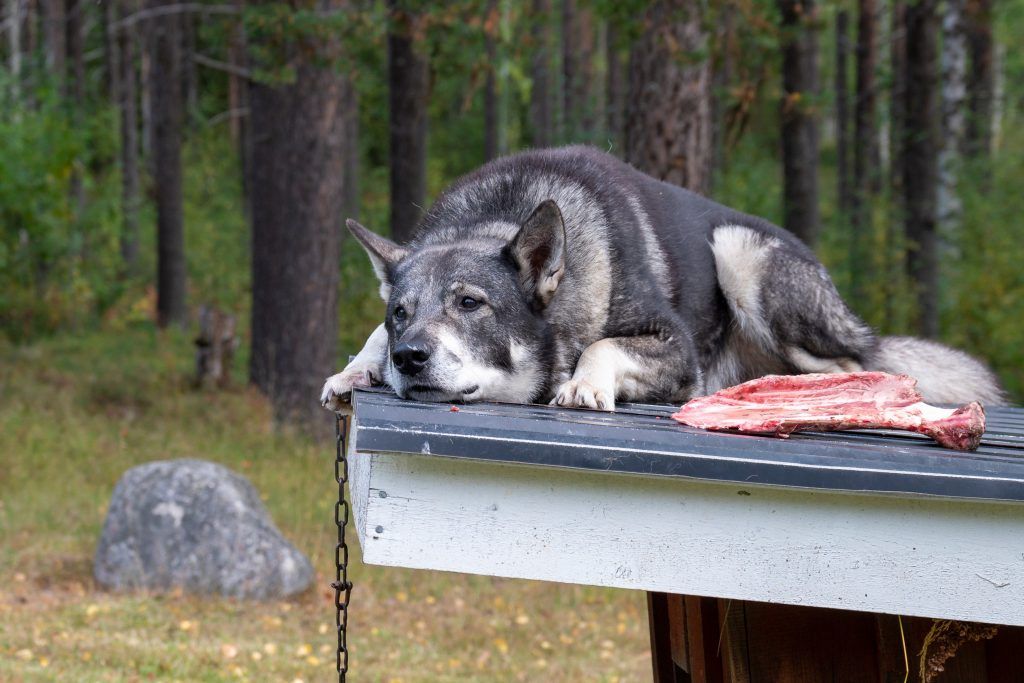
The Jämthund, also known as the Swedish Elkhound or Moosehound, is an ancient hunting dog built to conquer the impossibly harsh Nordic wilds. It’s believed the breed was developed by mixing domesticated dogs with wolves, most likely by accident if you believe the other claim that this breed dates back to the Stone Age. While we will likely never know for sure how this breed came to be, they do have wolf-like features indicating wolf blood being introduced along the line.
Breed Overview
Group: Northern Breed (UKC)
Height: 22 to 26 inches
Weight: 50 to 70 pounds
Coat and Color: Thick and harsh double coat that is gray in color with black tips
Life Expectancy: 10 to 12 years
East Siberian Laika
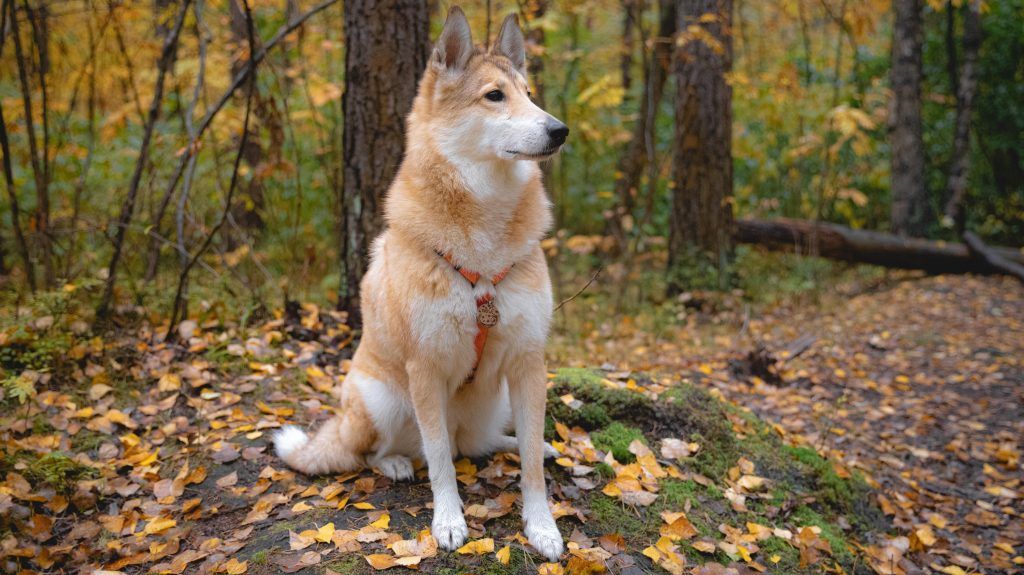
The East Siberian Laika served double duty as a sled dog and hunting dog to the Siberian people. They are very similar to their West Siberian cousins but are larger in build with a higher prey drive.
Breed Overview
Group: Northern Breed (UKC)
Height: 21 to 24 inches
Weight: 40 to 60 pounds
Coat and Color: Long and dense double coat that comes in various colors and patterns
Life Expectancy: 10 to 12 years
Russo-European Laika
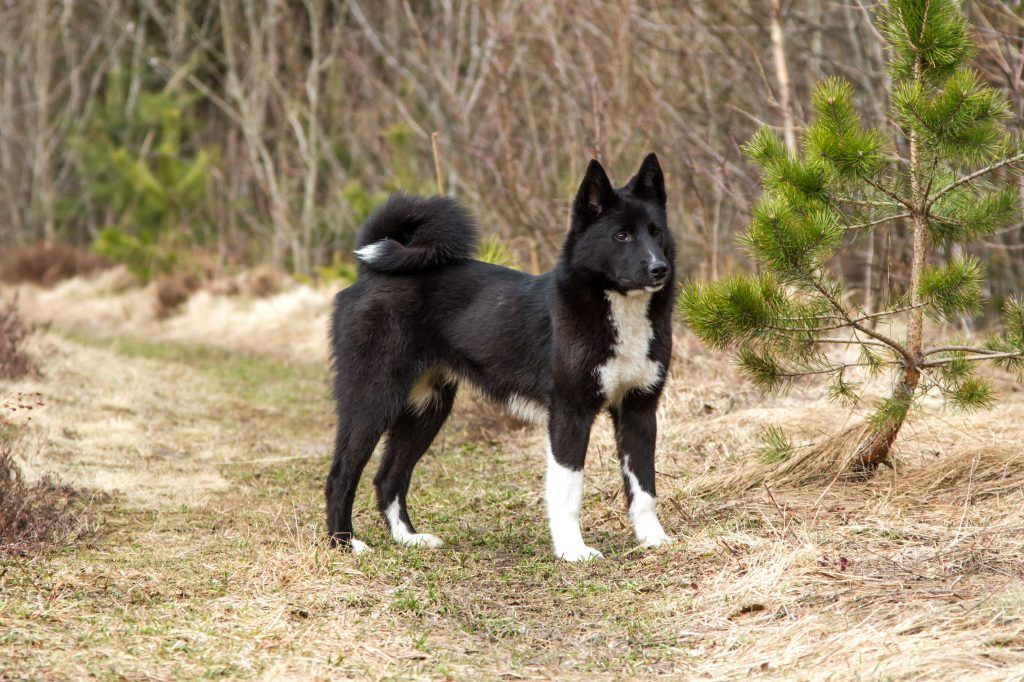
The Russo-European Laika is a newer spitz breed developed in the USSR in the mid 1940s as an all-purpose hunting dog – capable of hunting any animal. These dogs are at home roaming the wilderness, ready to ace it’s job as an assistant hunter.
Breed Overview
Group: Northern Breed (UKC)
Height: 18 to 22 inches
Weight: 25 to 50 pounds
Coat and Color: Short and smooth double coat that is black and white in color
Life Expectancy: 12 to 14 years
Guejae Gae
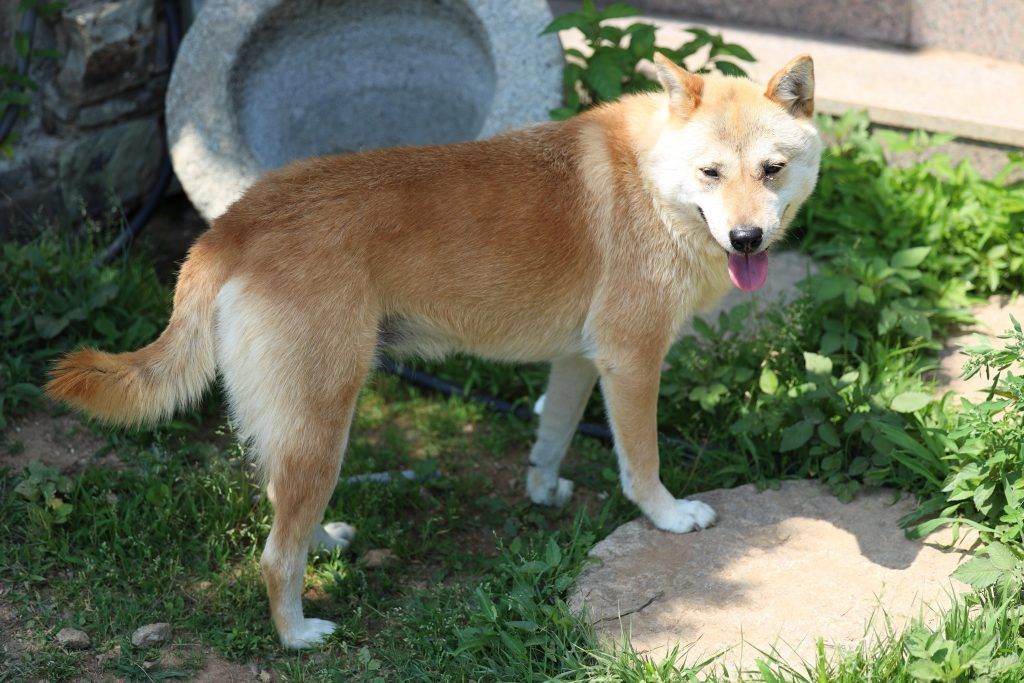
The Guejae Gae is a Korean spitz breed known for its quick agility when hunting wild boar. Other than being larger, this breed is nearly identical to its cousin – the Korean Jindo.
Breed Overview
Group: Foundation Stock Service (AKC)
Height: 22 to 26 inches
Weight: 55 to 75 pounds
Coat and Color: Thick and coarse double coat that is red in color with black tips
Life Expectancy: 10 to 12 years
Black Norwegian Elkhound
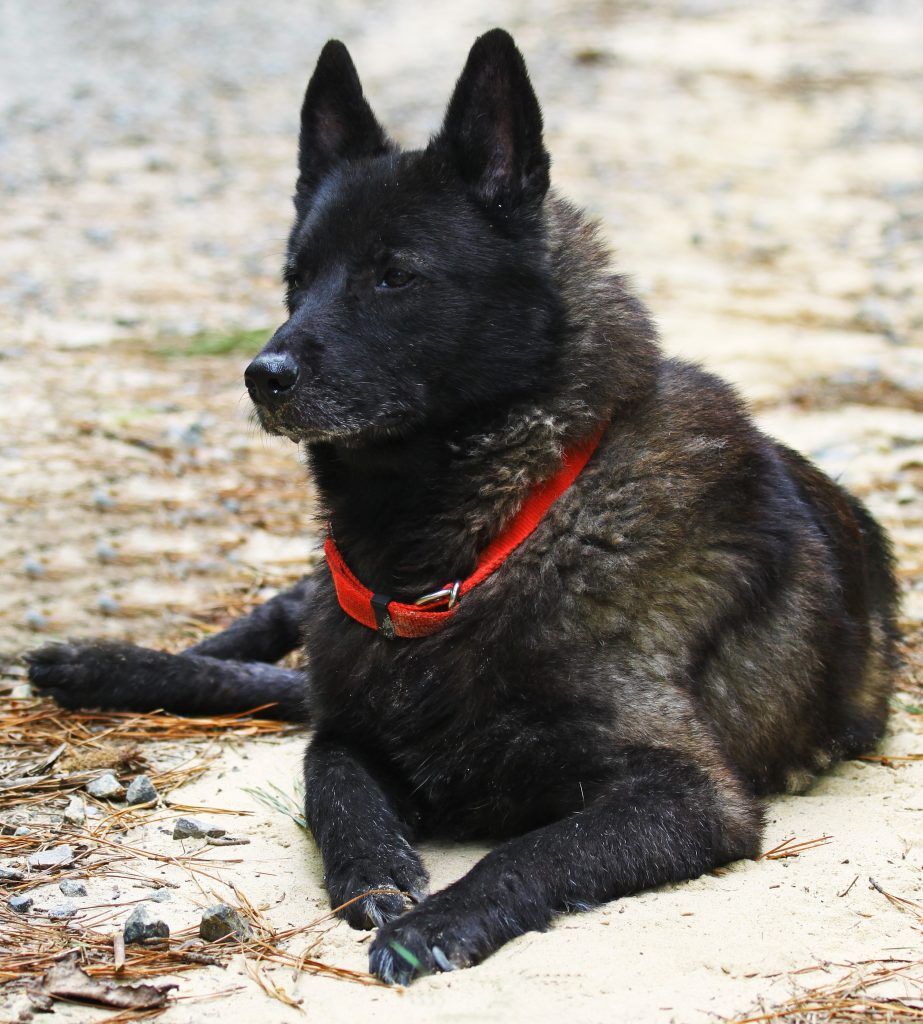
The Black Norwegian Elkhound is a Norwegian Elkhound with a solid black coat. The FCI recognizes them as a distinct breed – though they are uncommon in their native Norway, they are exceedingly rare in other countries.
Breed Overview
Group: Hound (AKC)
Height: 18 to 21 inches
Weight: 48 to 55 pounds
Coat and Color: Thick and harsh double coat that is solid black in color
Life Expectancy: 12 to 15 years
Yakutian Laika
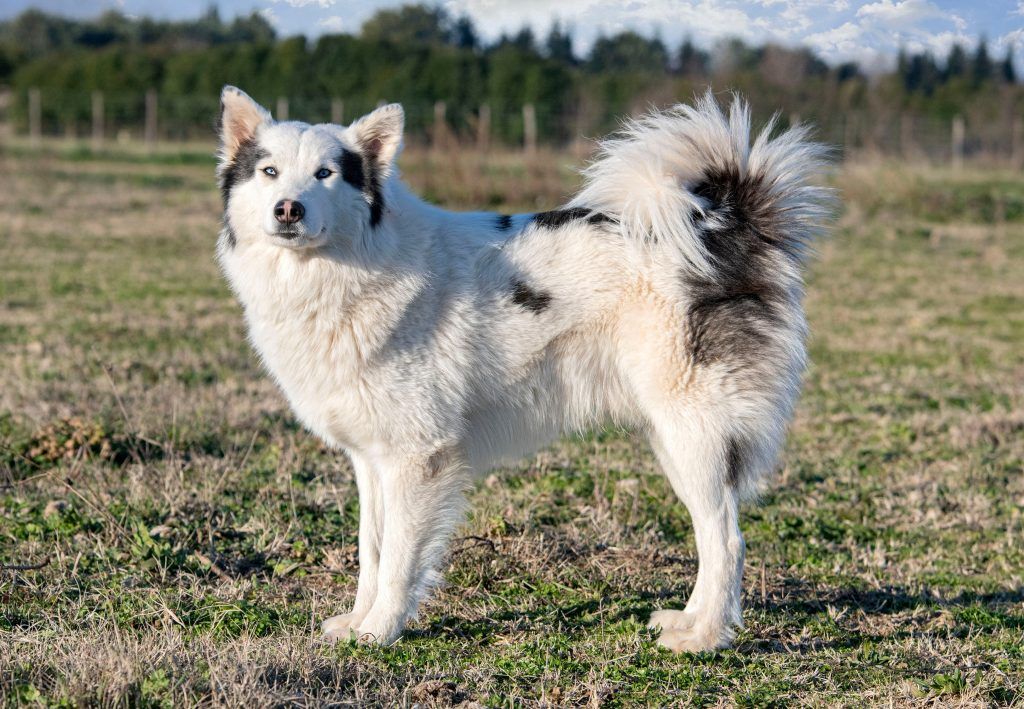
The Yakutian Laika is a multi-purpose spitz breed from Siberia, where it was used by the Yakut people to pull sleds, hunt game, and herd reindeer. This breed is often mistaken for a Samoyed, but it is a distinct breed that dates back almost 8,000 years to the aboriginal people of the area. Often described as a relentless northerner, this fluffy dog has a thick double-coat that protects it from the harsh climate.
Breed Overview
Group: Working (UKC)
Height: 21 to 23 inches
Weight: 40 to 55 pounds
Coat and Color: Long and dense double coat that comes in various colors and patterns
Life Expectancy: 10 to 12 years
Sakhalin Husky

It’s hard to say what country the Sakhalin husky originated in because they originated on Sakhalin Island – an island controlled by both Russia and Japan. Because of this, they are referred to as a Russian dog and a Japanese dog; in a way, both are correct. This is a nearly extinct breed, with less than 20 dogs estimated in existence. Their decline began in the 1930s when the Soviets killed off these dogs in mass because they were too expensive to feed – they had a tendency to prefer and eat salmon, at the time being a valuable export, making it cheaper to feed a horse than a dog.
The breed never recovered from this or the subsequent events of World War II. Sergey Lyubykh, the last remaining breeder, passed away in 2012, but before his death, he said there were no longer enough living animals to ensure the genetic diversity of the breed.
Breed Overview
Group: Northern Breed (UKC)
Height: 22 to 26 inches
Weight: 66 to 88 pounds
Coat and Color: Thick and coarse double coat that comes in various colors such as black and white, gray and white, or red and white
Life Expectancy: 10 to 12 years
Thai Bangkaew Dog

The Thai Bangkaew Dog is an intelligent, fun-loving spitz breed from Thailand. They make excellent family dogs, always wanting to be a part of the action – and doubling as a great cuddler. Although they are popular in Thailand, they are largely unknown around the world – but the spread of the breed has begun, and there are a small number of breeders in the United States today. It’s believed that these dogs originated at the Wat Bangkaew monastery.
Breed Overview
Group: Foundation Stock Service (AKC)
Height: 17 to 21 inches
Weight: 35 to 55 pounds
Coat and Color: Double coat that has a mixture of soft and coarse hair; white with black, brown, or red patches
Life Expectancy: 12 to 15 years
Salish Wool Dog
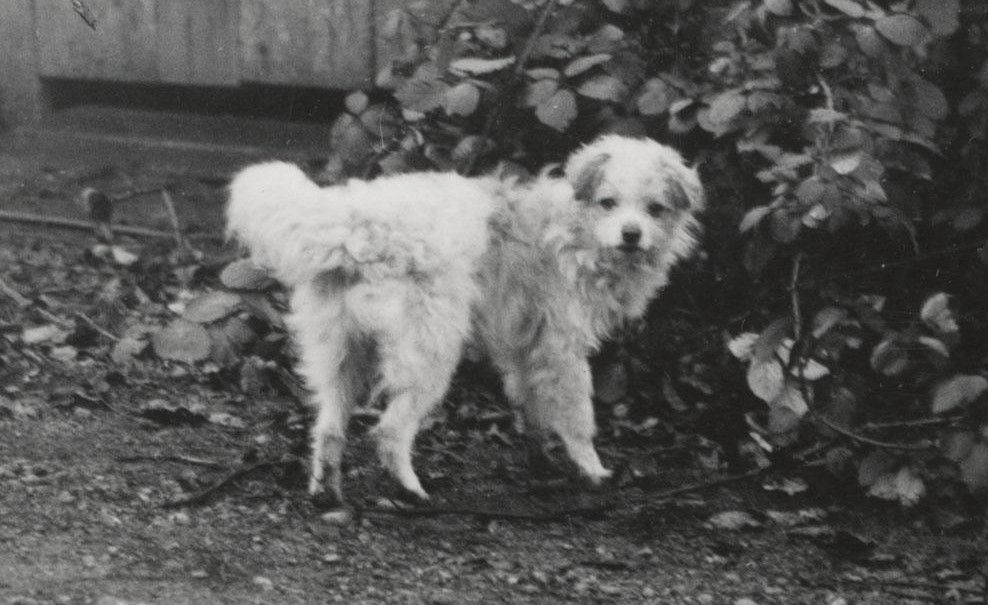
This breed was originally developed by the Salish people in what is now Washington state and British Colombia. Although now extinct, these dogs were incredibly unique. The Salish Wool Dog had fur that closely resembled sheep wool – as opposed to normal dog hair. As such, the Salish people selectively bred dogs for this trait and used the ‘wool’ they sheared to make blankets and clothes. Sadly, the breed was on the verge of extinction by the mid-1800s, and the last ones passed away by 1940.
Breed Overview
Group: Extinct
Height: 13 to 18 inches
Weight: 20 to 40 pounds
Coat and Color: Long and fluffy double coat that resembles sheep wool; white or cream in color
Life Expectancy: 12 to 14 years
Kintamani
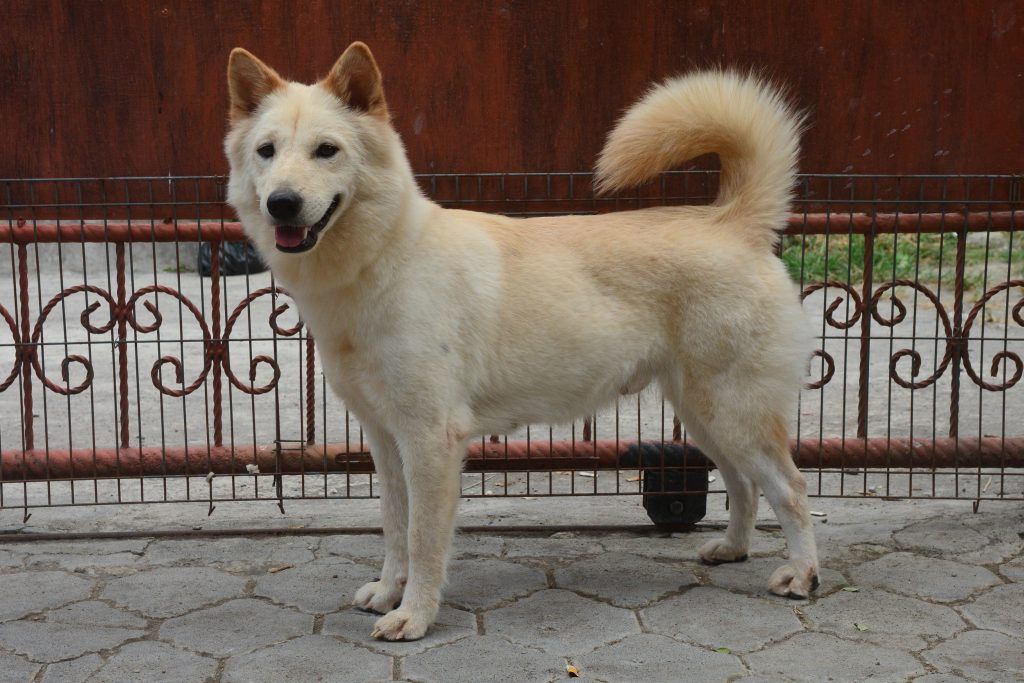
The Kintamani dog is an Indonesian spitz breed, specifically from the province of Bali, where it is listed as the official dog breed. Folklore suggests that the breed originated from Chow Chow dogs over 600 years ago. As one of the few breeds to share the blue-black tongue trait, there is likely some truth to the story. Today, the breed remains popular among the Balinese people for its elegant appearance, and they are extremely rare outside of Indonesia.
Breed Overview
Group: FCI recognized
Height: 15 to 20 inches
Weight: 22 to 33 pounds
Coat and Color: Medium-long and silky double coat that comes in various colors such as white, black, brown, or cream
Life Expectancy: 12 to 15 years
Schipperke
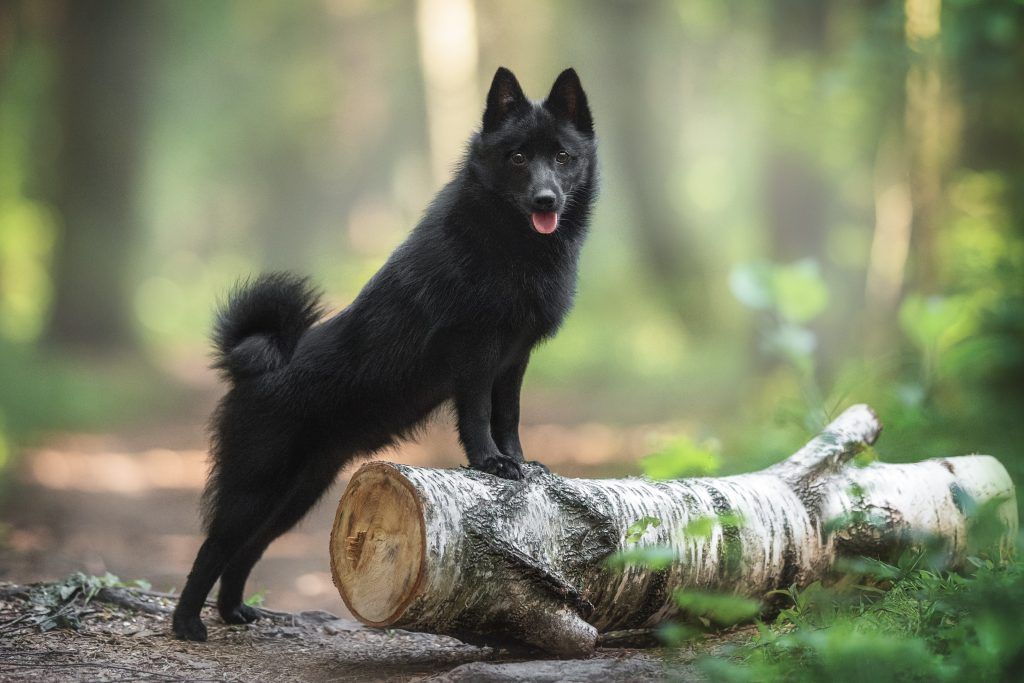
The Schipperke is a breed from Belgium recognized as part of the spitz breed family – though that is up for some debate. In Belgium, they refer to this breed as a small shepherd. Originally, they were used as watchdogs at home and ratters on barges and canal boats. They’ve since become an affectionate family breed – getting along famously with children and cats.
Breed Overview
Group: Non-Sporting (AKC)
Height: 10 to 13 inches
Weight: 10 to 16 pounds
Coat and Color: Short and smooth double coat that is black in color; forms a ruff around the neck
Life Expectancy: 13 to 15 years
Hokkaido
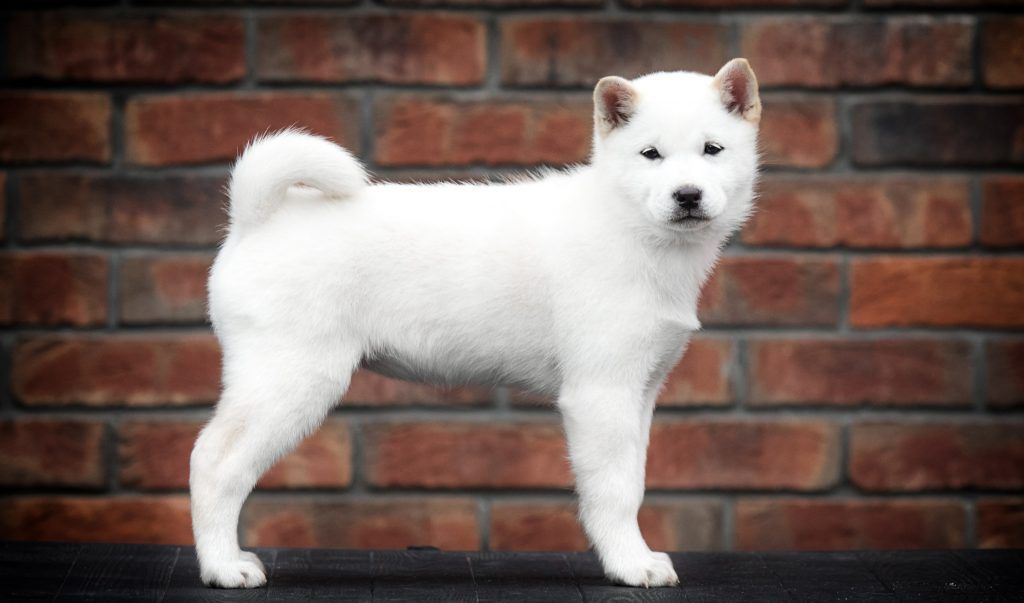
Another native Japanese breed is the Hokkaido dog, originally bred and used by the Ainu people for hunting bears and deer. Prior to being designated a Japanese national treasure, they were simply referred to as Ainu dogs – the name Hokkaido-ken or Hokkaido wasn’t an official name until it was nationally recognized. Unlike the Shiba-inu (due to genetic stubbornness), the Hokkaido is highly trainable and a devoted family companion.
Breed Overview
Group: Foundation Stock Service (AKC)
Height: 18 to 22 inches
Weight: 45 to 65 pounds
Coat and Color: Short and dense double coat that comes in various colors such as white, black, red, or brindle
Life Expectancy: 11 to 13 years
Hare Indian Dog

The Hare Indian Dog is an extinct breed native to Canada. Originally developed by the Hare, a North American Indian tribe living in the Northwestern parts of Canada. These dogs were used for coursing – which is sport hunting game animals by sight rather than scent. It’s rumored that these dogs were actually domesticated coyotes rather than domestic dogs as we know them.
Breed Overview
Group: Extinct
Height: 13 to 18 inches
Weight: 20 to 40 pounds
Coat and Color: Short and smooth double coat that came in various colors such as black and white, gray and white, or red and white
Life Expectancy: Unknown
Tahltan Bear Dog
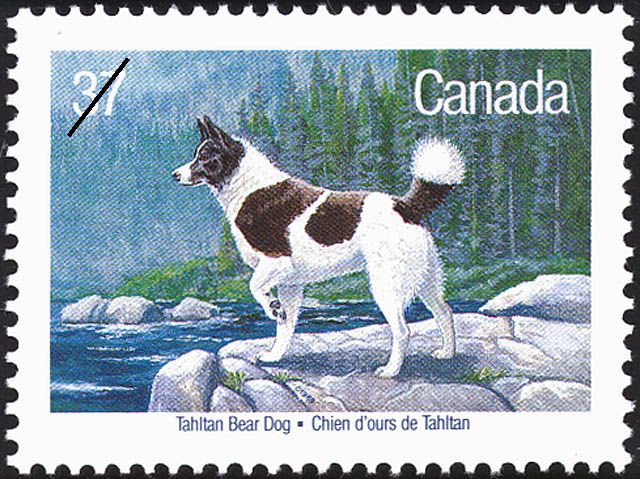
The Tahltan Bear Dog is an extinct spitz breed native to Canada and used by the Tahltan people for bear hunting – a skill it supposedly excelled at. No one knows where the breed came from; according to Tahltan legend, the dog was created by magic at the beginning of time to protect the indigenous people. In 1941, the Canadian Kennel Club (CKC) recognized the Tahltan Bear Dog as a distinct breed and is 1 of 5 breeds they describe as uniquely Canadian. The last time one was registered with the CKC was in 1953, and it’s believed the breed went extinct in the 70s or 80s – although there are now rumors a few still exist.
Breed Overview
Group: Extinct
Height: 10 to 13 inches
Weight: 10 to 16 pounds
Coat and Color: Thick and fluffy double coat that came in various colors such as black, brown, or red with white markings
Life Expectancy: Unknown
Seskar Seal Dog
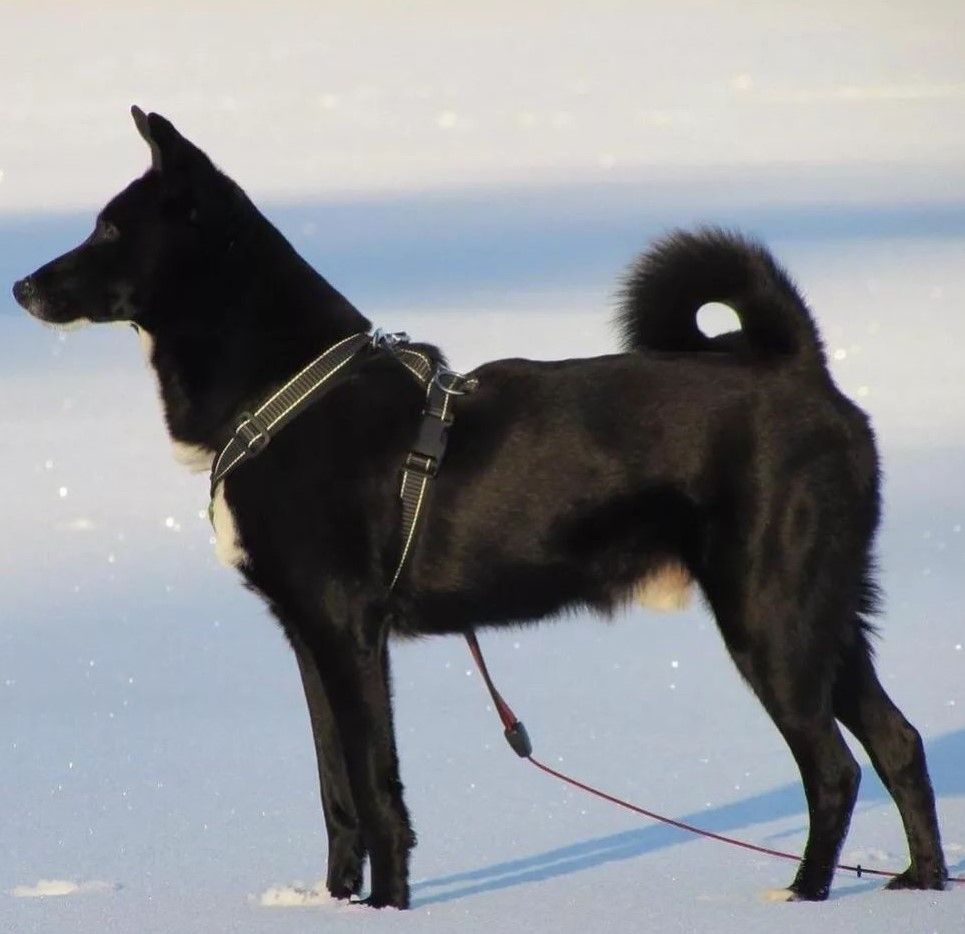
Historically, the Seskar Seal Dog was used by the people of Seskar Island in the Baltic Sea for hunting seals on ice. When people stopped hunting seals, this breed started to decline due to a lack of purpose – eventually resulting in the extinction of the breed. Modern attempts have been made to resurrect the breed, but these dogs are not direct descendants and likely differ in many ways from the original.
Breed Overview
Group: Extinct
Height: 17 to 21 inches
Weight: 31 to 44 pounds
Coat and Color: Medium-long and silky double coat that came in various colors such as black or brown with white markings
Life Expectancy: Unknown
Breeds to Avoid
Spitz breeds are generally healthy and hardy dogs that can adapt to various climates and environments, but they may not be suitable for everyone. Some factors to consider before choosing a spitz breed are:
- Shedding: Many spitz breeds have thick double coats that shed heavily throughout the year. This means they require regular brushing to remove loose hair and prevent matting. They also produce more dander than other breeds, which can trigger allergies in some people.
- Barking: Spitz breeds are known for being vocal dogs that will bark, howl, or yodel to express themselves. They may also bark to alert their owners of potential threats or intruders. While this can make them good watchdogs, it can also be annoying or problematic for neighbors or apartment dwellers.
- Training: Spitz breeds are intelligent and independent dogs that can learn quickly, but they can also be stubborn and dominant at times. They may challenge their owners or ignore commands if they are not motivated or interested. They need firm and consistent training from an early age, as well as positive reinforcement and socialization.
- Exercise: Spitz breeds are active and energetic dogs that need plenty of exercise and mental stimulation to keep them happy and healthy. They may become bored or destructive if they are left alone for too long or do not have enough outlets for their physical and mental needs. They also enjoy having a job to do, such as hunting, sledding, or agility.
FAQs
What are the most popular spitz breeds?
Some of the most popular and recognizable spitz breeds in the world are the Siberian Husky, the Alaskan Malamute, the Pomeranian, the Chow Chow, and the Samoyed.
What are the differences between spitz breeds and other types of dogs?
Spitz breeds are a group of dogs that share some common characteristics, such as a wedge-shaped head, erect ears, a curled tail, and a thick double coat. They are believed to have originated from ancient wolf-like dogs that lived in cold regions of the world. Other types of dogs may have different origins, appearances, and traits that distinguish them from spitz breeds.
Are spitz breeds good family dogs?
Many of the spitz breeds can make good family dogs if they are well-trained, socialized, and matched with the right owners. They are usually friendly, loyal, and playful with their families, but not all of them are known to get along well with other dogs or animals.
























